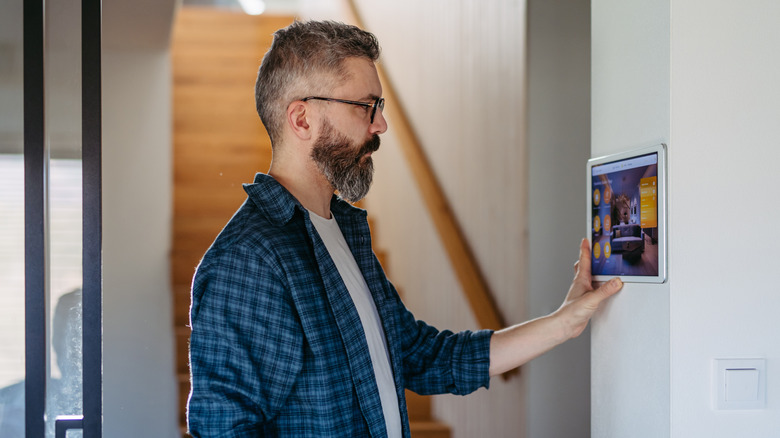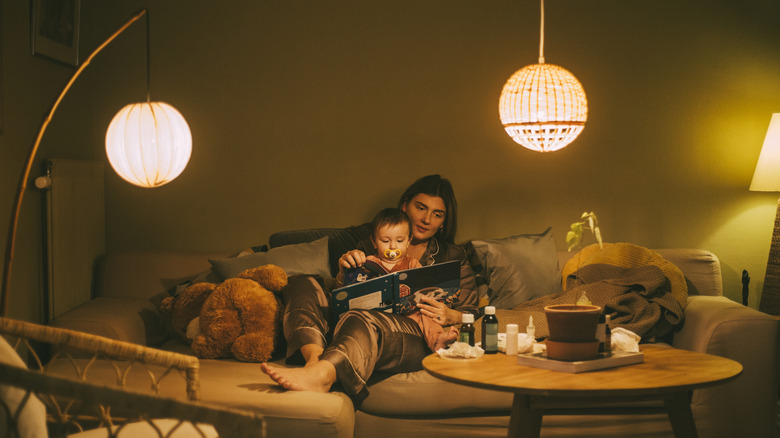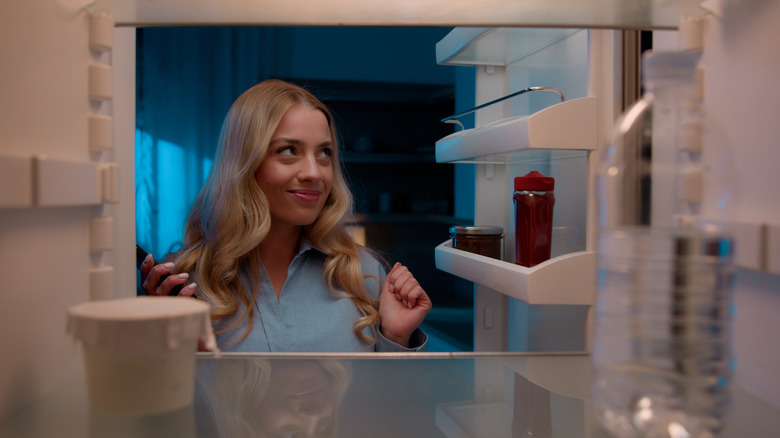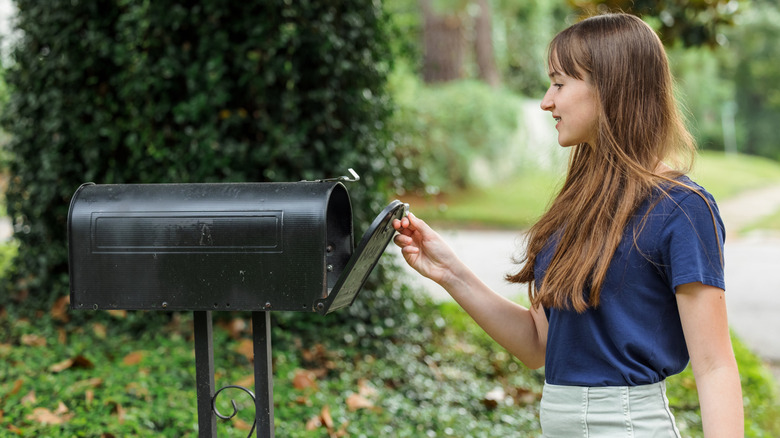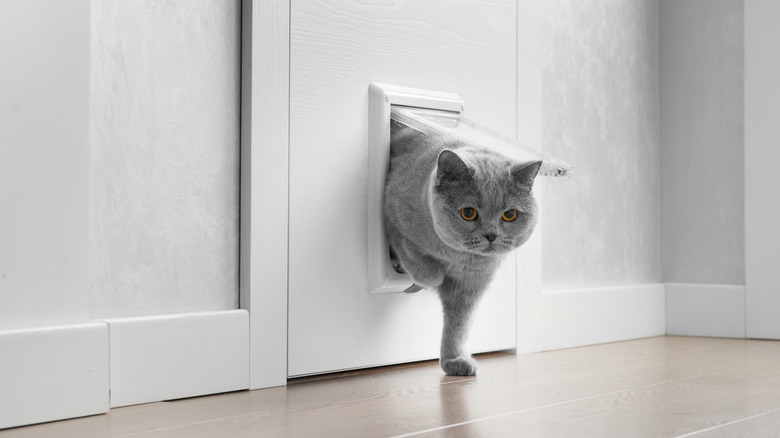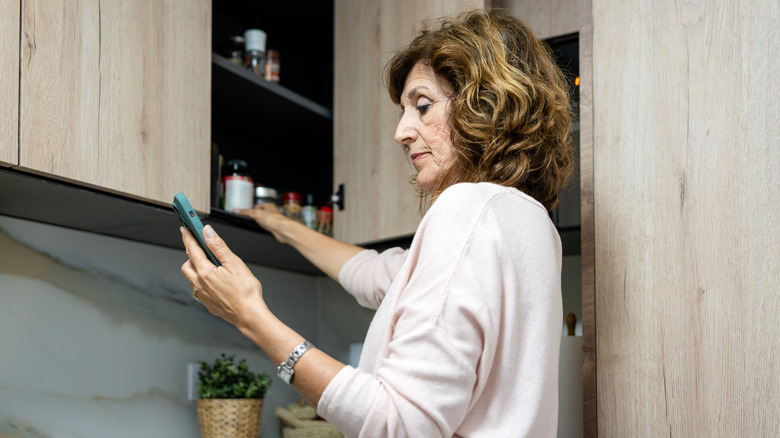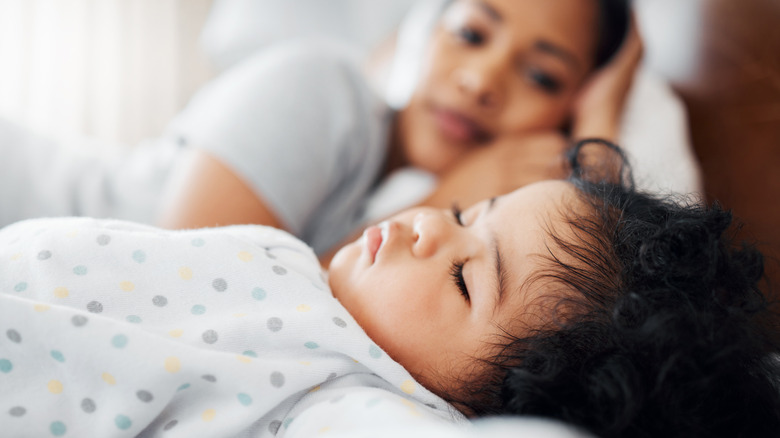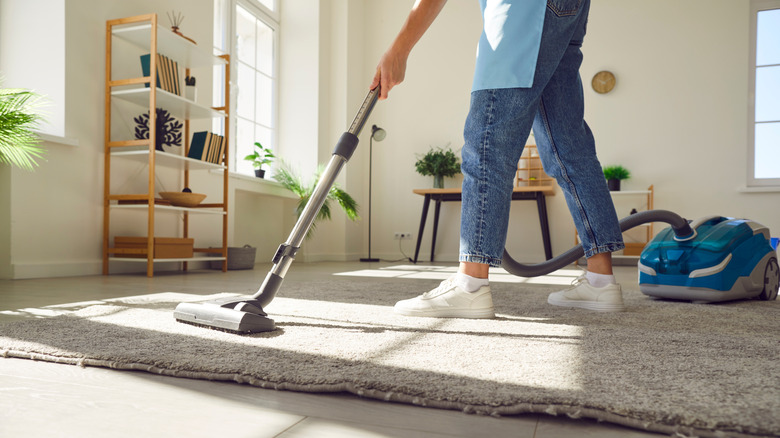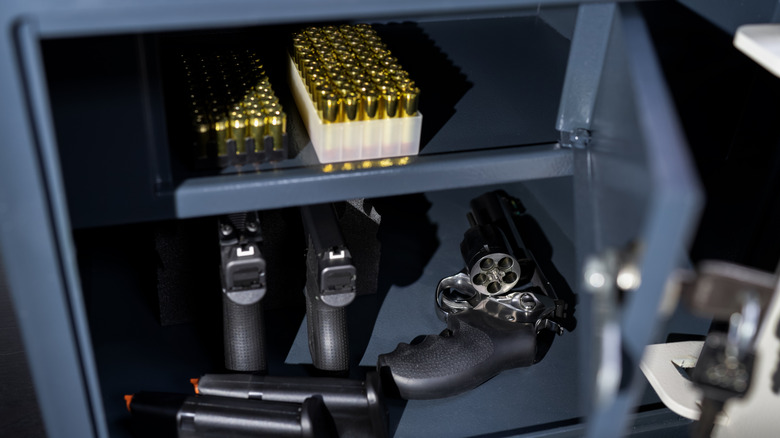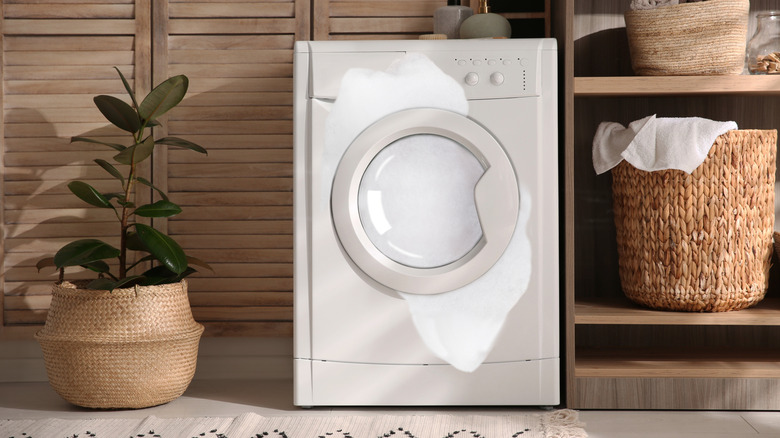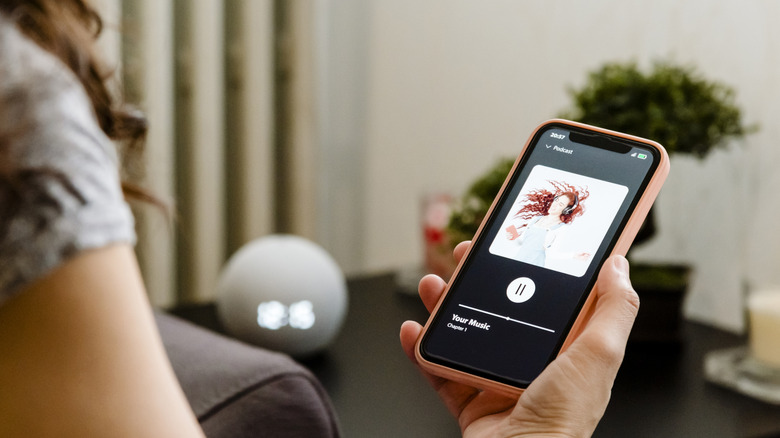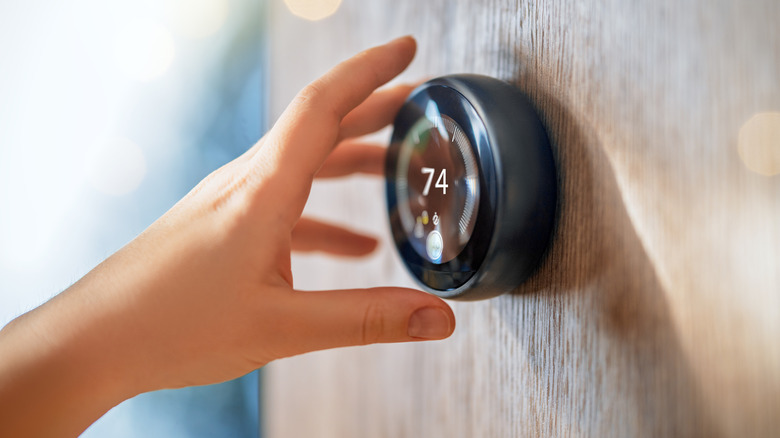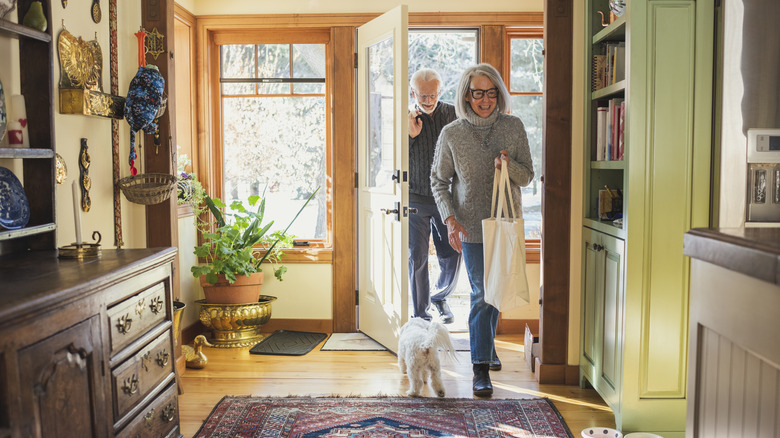13 Creative Uses For Door Sensors In Your Smart Home
Having a smart home isn't just about voice assistants. An effective setup creates an interconnected ecosystem of devices working together to make daily life more convenient, efficient, and secure without breaking the bank. From smart thermostats that learn your schedule to plugs that cut power to idle devices, today's gadgets can do far more than most realize. Among the most underrated and quietly powerful tools in this setup are door, window, and magnetic contact sensors.
Typically small and wireless, these sensors are the silent workhorses of any connected home. They're usually made up of two pieces: one mounted on a door or window, and the other on a frame. When separated, they send a signal that can trigger a wide range of automated responses. They're crucial to home security systems, but their potential stretches beyond simple alerts.
Brands like Ring, Aqara, Eve, Wyze, and Samsung SmartThings offer reliable, budget-friendly sensor options that work across systems such as Alexa, Google Home, Apple HomeKit, and more. They can run on Wi-Fi, Zigbee, or Z-Wave, and the little devices can sync with cameras, lights, thermostats, and speakers to create powerful routines that feel almost magical.
If you're interested in taking your smart home to the next level, check out these creative and practical ways to use these sensors. It's not just for safety, but for smarter living.
Trigger lights automatically
One of the most practical and rewarding uses for door sensors in a smart home is automating the lighting. By pairing a door sensor with a smart bulb or switch, you can set lights to turn on as soon as a door opens. This seemingly simple automation is not only convenient, but it will also boost safety by reducing the risk of tripping or fumbling for a switch in the dark. It could be great for a closet, pantry, laundry room, or garage.
Setup is relatively straightforward. Smart home platforms like Alexa, SmartThings, or Google Home will let you create a routine or automation linking the door sensor to a light. Some platforms may require a hub, depending on the sensor brand, but many Wi-Fi-enabled sensors work independently.
The benefits are also immediate. It results in hands-free lighting, improved accessibility, and a subtle quality-of-life upgrade. It's particularly useful for seniors or houses with children, where a well-lit entry can prevent accidents. Downsides are minimal, though battery-powered door sensors will need occasional replacement, and budget-minded users may need to invest in compatible smart bulbs or switches if they haven't already. While this may mean an initial investment cost, it's overall a relatively affordable and high-impact automation.
Protect fridge from midnight snacking
Door sensors can also help keep your snack habits in check. Attach one to your refrigerator or freezer, and you can monitor when it's been opened. With smart notifications or time-based routines, you'll know if someone's raiding the fridge during off-hours, like midnight to 5 a.m., without having to hover like a hawk.
This setup is particularly handy for parents trying to limit late-night sugar intake for their kids or individuals looking to curb impulsive snacking and create healthier routines. Paired with a smart assistant like Alexa or Google Assistant, you can even trigger gentle reminders or audio cues when the fridge is accessed after hours. If you want to take it further, you could even log entries over time using third-party services like IFTTT or Home Assistant.
There aren't many downsides to this use of a door sensor. This is a smart gadget that's easy to set up, and most battery-powered door sensors will last several months before needing a replacement. Just be sure the sensor and hub (if required) support custom schedules or time-based automations. While this won't lock the fridge, as you'll need a physical solution for that, it does raise awareness and accountability. It's a playful yet practical way to integrate wellness and routine discipline into your smart home.
Monitor mailbox activity
If you're tired of guessing when the mail arrives, a smart door sensor on your mailbox can bring that small, satisfying update to your phone. By attaching a weather-resistant sensor to the mailbox lid or door, you'll get real-time notifications the moment it's opened. That means no more unnecessary trips in bad weather or repeated peeks down the driveway.
This setup is especially useful for those expecting important documents, packages, or even prescription deliveries. For remote workers, travelers, or caregivers monitoring deliveries for elderly relatives, it adds a layer of awareness and convenience. It's also a subtle security boost, as if the mailbox is accessed at an odd time, you'll know.
The main consideration here is durability. Since most mailboxes are outdoors and exposed to the elements, look for a door sensor rated for outdoor use or housed in a weatherproof case. Some long-range Zigbee or Z-Wave sensors may perform better than standard Wi-Fi models, especially if your mailbox is far from your router.
While there's a small upfront cost of typically somewhere under $50 for a sensor and optional hub, the peace of mind and everyday convenience it offers make it well worth it.
Track pet access
For those with a furry friend who comes and goes through a dog door, cat door, or gated area, a smart door sensor can help you stay in the loop. By installing a sensor on the pet door or gate, you can receive real-time alerts whenever it's opened, giving you insight into your pet's daily patterns and ensuring they're not slipping out unnoticed.
This is especially helpful for busy owners who aren't always home or for anyone with an especially curious cat or dog. Want to know if your pup took themselves outside during the early morning hours? You'll know the moment it happens. Better yet, if you actually pair the door sensor with a smart security camera, there can also be visual confirmation and even more peace of mind.
This setup is really simple. Start by attaching the sensor to the frame of the pet door or gate, then link it to your smart home platform, and customize the alert settings. Some platforms even let you log usage over time or automate lighting in response, like turning on a patio light when the door opens at night.
Downsides for this use of a door sensor are again minimal, especially considering the benefits. You'll just want to ensure the sensor doesn't interfere with your pet's movement and is water-resistant if outdoors. It's a low-profile way to keep tabs on the pets to ensure they're safe and healthy.
Receive alerts for medicine cabinet access
In homes with children, elderly family members, or roommates, monitoring who accesses your medicine cabinet can be a serious matter of safety. A door sensor discreetly placed on the cabinet can notify you any time it's opened, providing a critical safeguard against accidental ingestion, misuse, or forgotten doses.
This is especially valuable in homes with prescription medications, where even a moment of unsupervised access could pose a serious health risk. Caregivers can also benefit from these alerts, ensuring loved ones are taking medication on schedule or preventing them from accessing something they shouldn't. It's a subtle but powerful layer of oversight.
Setup is straightforward. It requires attaching a compact door sensor to the inside edge of the cabinet and connecting it to your smart hub or app. The best smart home hub platforms will allow you to customize alerts based on time, frequency, or user presence. For added functionality, you can even link it with a camera or voice assistant for voice alerts.
Spacing must be kept in mind with this use of the door sensor. Some may be too bulky for tight cabinet doors, so choose one with a slim profile. It's a vital safety net that quietly looks out for those you love.
Silence smart devices during naptime or meetings
A door sensor in a nursery or home office can automatically trigger devices to hush up when silence matters. This could be during a toddler's nap, a conference call, or focused work time. It's one of those small automations that truly make your smart home feel intuitive.
When the door closes, the sensor can activate a "Do Not Disturb" routine muting smart speakers, disabling notification chimes, and even dimming lights or adjusting blinds. It's a seamless way to preserve peace and quiet without lifting a finger. Parents can especially appreciate this setup for keeping Alexa from blurting out reminders to kids during naptime.
Most platforms, including Alexa, Google Home, and SmartThings, support conditional automations triggered by door sensors. You'll just need to link the sensor to routines that adjust sound settings or send commands to specific devices. While not as simple as some of the other setups on our list, it's still pretty easy, and the payoff is well worth it.
There's no major downside, though the effectiveness depends on how many devices are part of your ecosystem and how customizable their settings are. But for minimal cost and effort, you get a smart layer of calm.
Track cleaning service
For those who have a regular cleaning service at home, it's possible to know when the staff arrives, or whether they stay for the full scheduled time. A smart door sensor can give you a simple, automated answer to both. By placing it on your front door (or whichever entry they use), you'll receive a timestamped notification every time it opens or closes, offering a clear log of comings and goings.
This is especially helpful if you're not home during cleanings, or if you employ other in-home services like dog walkers, babysitters, or contractors. It adds a layer of accountability without needing to hover or install cameras in private spaces.
Setup is quick if you just mount a door sensor to the main entryway, connect it to your smart home platform, and enable notifications. Some platforms also let you export activity logs or create custom automations. For example, triggering an indoor camera to record for the first five minutes after entry, or turning on certain lights, is possible with the right setup.
There are no real downsides, aside from battery upkeep and ensuring visitors know the system is in place (for privacy and transparency). It'll cost less than $50 to keep tabs on your home when you're not there.
Monitor babysitter visits
It's already tough enough to entrust your child to a babysitter or nanny, so retaining a sense of security and knowing everything is alright can feel priceless. A smart door sensor can help with that by giving you a discreet way to monitor their arrivals and departures with no cameras or awkward check-ins. It's just simple, timestamped alerts whenever the door opens or closes, just like with the cleaning services.
By placing a sensor on your front or back door, you'll be notified the moment the sitter arrives and when they leave. This lets you verify whether they showed up on time, how long they stayed, and if any unexpected comings or goings occurred during the visit. It's a great solution for working parents, especially those who rely on multiple caregivers or are managing schedules from a distance.
The setup is again quick and unobtrusive. Just install the sensor, connect it to your smart home app, and enable notifications. For added functionality, you can pair the sensor with a smart lock from a top brand to track both door openings and actual unlock events.
While it's not a full substitute for a nanny cam or background check, it's a helpful addition to your parental toolkit. And best of all, it respects privacy while still providing a digital footprint of what's happening at home.
Secure valuable cabinets or closets
If you store firearms, sensitive documents, electronics, or other high-value items at home, a smart door sensor can offer an added layer of quiet protection on top of a combination lock. By placing a sensor on a gun safe, valuables cabinet, or supply closet, you'll receive instant alerts when it's accessed, whether authorized or not.
This kind of setup is especially useful for households with children, guests, or roommates. While it's not a substitute for a physical lock or proper firearm safety, it adds a critical digital safety net. If the cabinet opens at an odd time or when you're away, you'll know immediately, and you're able to respond swiftly and accordingly.
To set it up, mount a compact door or contact sensor inside or along the opening of the cabinet. Make sure your smart home platform supports alert customization so you can get real-time push notifications, and optionally trigger other actions like activating a camera or sounding an alarm.
Costs are low, usually under $40, compared to some others that are over $100. Still, the peace of mind on this one is more than substantial, especially with small children. Just ensure the sensor fits properly in tight spaces and doesn't interfere with the door's function.
Laundry room leak detection backup
While dedicated water leak detectors are the go-to solution for spotting spills or overflows, a door sensor can serve as a clever backup in your laundry room. Mounting one on the access door to your washer-dryer closet or utility room gives you another layer of protection by notifying you when the door is unexpectedly opened or left ajar.
Let's say someone opens the door in a rush and forgets to close it during a cycle, or worse, you find the door open hours later with a small flood underneath. A smart door sensor won't detect water directly, but it can alert you that something's off. When paired with routines or other devices, it could even trigger a smart light to turn red, or prompt you to check a nearby water sensor or camera feed.
Installation is simple, and the cost is minimal. Most sensors run under $30 and require little maintenance aside from occasional battery swaps. While not a replacement for actual leak detection, it adds a secondary cue that something may be wrong, especially in rental units or stacked washer closets where water sensors are hard to place.
Turn on music
A smart door sensor isn't just for lights, alerts, and security monitoring. It can be the DJ of your daily routine. By linking a sensor to your favorite smart speaker, you can automatically cue up music the moment you walk through the door. Whether it's jazz after work, lo-fi in the morning, or a curated playlist to get the weekend started, your home can start setting a mood before you even take off your shoes.
This automation works especially well with some slight settings changes for Google Home, Alexa, or Apple HomeKit. Simply create a routine triggered by the door opening and select your preferred speaker, playlist, or streaming service. It adds personality and comfort to your space without needing to tap a screen or ask a voice assistant for help.
There are virtually no downsides to this use of the sensor. Things to consider are the initial setup and ensuring your smart speaker, ideally from one of the best brands, is on the same network and compatible with the automation platform. You'll also want to consider quiet hours if you're using shared speakers. Still, it's a feel-good upgrade that transforms your front door into the trigger for your perfect vibe.
Automate thermostat adjustments
Smart thermostats already make managing a home's climate easy, but pair one with a door sensor, and you unlock a whole new level of efficiency. By monitoring when exterior doors are opened, your system can automatically adjust heating or cooling to avoid wasting energy. That saves serious money. If you accidentally leave the back door open for too long, for example, the thermostat can pause until it's closed again, keeping your HVAC system from overworking.
This automation is especially useful in homes with kids, pets, or frequent foot traffic where doors might be left open without a second thought. It's also great for garages or sunrooms with less insulation, areas where heat or cool air can disappear in seconds.
To set it up, connect your door sensor and smart thermostat within the same ecosystem (like SmartThings, Alexa, or Home Assistant). Some thermostats, like Ecobee and the Nest Learning Thermostat (4th Gen), even support this natively, while others may require third-party platforms like IFTTT for more customized control.
Downsides are few, though your thermostat and sensor must be compatible, and Wi-Fi-dependent setups could be affected by network issues. Still, for a small investment, it's a powerful energy-saving move that gives your climate control system just a little more common sense.
Put it all together for a return home routine
With all of the aforementioned uses, why stop at just one automation? You can build a full "Return Home" routine that activates the moment you walk in. Imagine opening your front door and instantly triggering a cascade of actions — lights turn on, your favorite playlist fades in, the thermostat adjusts to a cozy temperature, and even the coffee machine kicks into gear on late nights if that's you're thing. That's home synergy at its best.
Most major platforms like Alexa, Google Home, and Apple HomeKit allow you to stack actions into a single routine, all triggered by the front door opening. Want to keep it quiet after a certain hour? Add conditions based on time or who's arriving, especially if combined with presence detection from your phone or smartwatch.
While the setup may take a little trial and error to perfect, the experience is worth it. You'll need compatible devices like bulbs, speakers, and thermostats, but no extra hardware beyond your existing ecosystem. The only real downside is that you might start to become spoiled and expect every place you enter to greet you like royalty.
